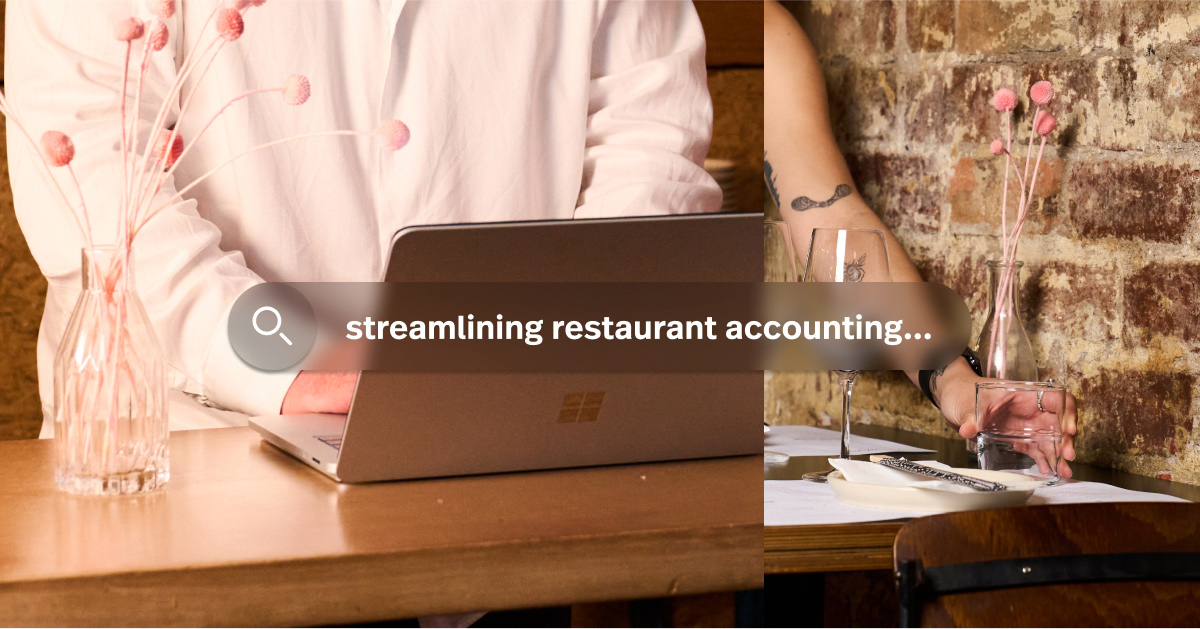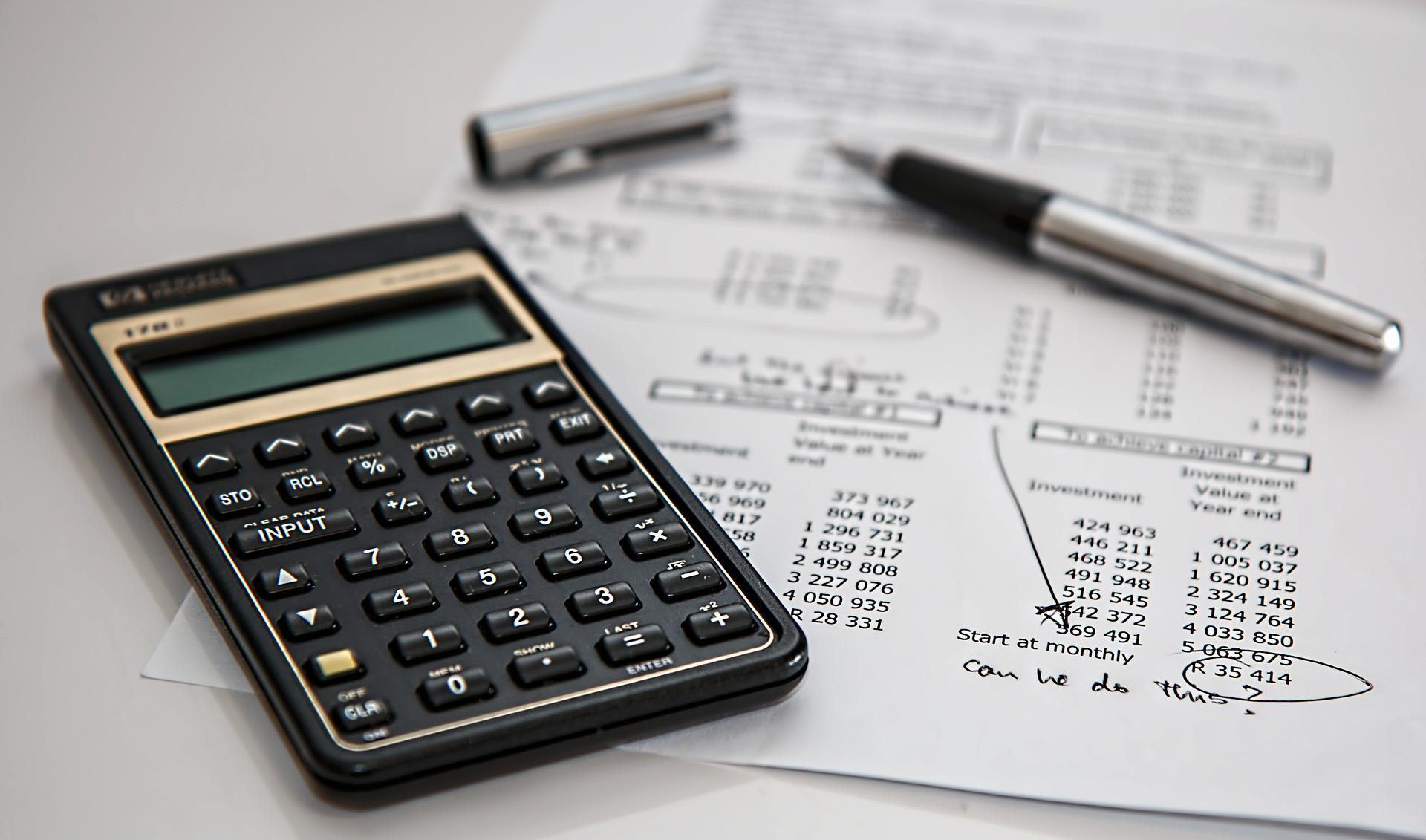
Restaurant accounting can be daunting for business owners, as there’s a lot to consider, from tax compliance to payroll, reconciliation and reporting. However, timely and accurate restaurant accounting is crucial to the success and growth of your restaurant.
To help streamline your finances, we’ve curated the ultimate guide to restaurant accounting that tackles everything from profit margins to accounting software and bookkeeping reports to empower you to take charge of your finances.
Let’s dive in.
- What is restaurant accounting?
- What is the difference between bookkeeping and accounting?
- What are the benefits of restaurant accounting?
- Which restaurant accounting method should you use?
- What is the average restaurant profit margin?
- How do you set restaurant accounting goals?
- Restaurant accounting reports and KPIs you should measure
- Should you outsource your restaurant accounting?
- How to optimize your restaurant accounting
What is restaurant accounting?
Restaurant accounting is the broad term used for the different processes associated with managing the financial records and transactions of restaurants. It involves everything from tracking revenue and expenses to payroll and managing operating costs.
The main goal of restaurant accounting is to ensure the accurate and efficient management of financial transactions, which will empower business owners to make informed decisions and remain compliant.
What is the difference between bookkeeping and accounting?
The terms bookkeeping and accounting are often used interchangeably, and while they are closely related, there are some differences between the two.
In a nutshell, bookkeeping is the process of recording and organizing financial transactions, whereas accounting involves analyzing and interpreting financial data to provide insights and guidance for decision-making.
Bookkeeping tracks and organizes a company’s financial transactions, such as sales, purchases, payments, and receipts. These transactions are recorded in journals and ledgers and are then summarized into financial statements. Essentially, bookkeepers are responsible for ensuring the accuracy of financial data, maintaining records, and producing reports.
On the other hand, accounting is a broader term that includes bookkeeping and other financial activities, such as analyzing and interpreting financial data to provide insights and spot trends to help business owners make financial decisions.
Accountants use the financial statements bookkeepers produce to prepare tax returns, create budgets, and provide financial advice. They also help businesses to comply with financial regulations, such as tax laws, and manage potential risks.

What are the benefits of restaurant accounting?
Restaurant accounting is an essential part of running a business and has several benefits.
- Improve financial management: keep track of your financial transactions and better manage your finances to make more informed business decisions.
- Better cash flow management: track your cash flow, making forecasting future financial needs and managing expenses easier.
- Enhance profitability: accurate financial record keeping makes it easy to identify areas of your business that generate the most profit and those that are not. You can then make necessary adjustments to improve profitability.
- Tax compliance: maintaining accurate financial records ensures you meet legal and tax requirements, avoiding potential penalties and fines.
- Easy access to financial information: a well-maintained accounting system provides easy access to financial data and reports, which can inform decisions and monitor the financial health of your business.
Which restaurant accounting method should you use?
There are two primary accounting methods that restaurants can use; the cash accounting method and the accrual accounting method.
What is the cash accounting method?
The cash accounting method records revenue and expenses only when an actual transaction occurs. This means that income is recorded when the payment is received, and expenses are recorded when they are paid.
This method is commonly used by small businesses, including restaurants, as it is relatively simple and easy to implement. The cash accounting method provides an accurate picture of a restaurant’s cash flow and is particularly useful for venues with a lower sales volume or irregular cash flow. However, it may not always accurately represent your financial position, as it doesn’t consider any outstanding debts or invoices.
What is the accrual accounting method?
The accrual accounting method records revenue and expenses when they are earned or incurred, regardless of when the actual cash transaction occurs. This means that revenue is recognized when a sale is made, even if the customer still needs to pay, and expenses are recognized when they are incurred, even if the bills are still to be paid.
While the accrual method can be more complex and time-consuming, it gives a more accurate picture of a restaurant’s financial health as it considers current and future obligations and revenue.
Ultimately, the accounting method you choose will depend on your restaurant’s size, structure and financial goals. If you’re unsure, consult an accountant or financial professional to determine the best method for your business needs.
What is the average restaurant profit margin?
Before we dive into restaurant profit margins, it’s important to note that these numbers can differ depending on factors like the type of cuisine, location, size, and overall efficiency of a restaurant’s operations.
It’s estimated that the average profit margin for a full-service restaurant sits around 3-5%. However, this jumps to 6-9% for quick-service restaurants.
Whichever way you look at it, restaurants operate with razor-thin profit margins, emphasizing how crucial it is to keep on top of your restaurant accounting.
Several factors can impact a restaurant’s profit margin, all of which should be closely monitored through your accounting processes.
- Food and beverage costs: the cost of the ingredients and beverages used to create menu items. High food and beverage costs can reduce profit margins, while lower costs can increase them.
- Labor costs: such as employee wages and benefits, including superannuation and payroll. High labor costs can decrease profits, whereas lower costs can increase them.
- Overhead expenses: rent, utilities, insurance, and other fixed costs. Higher overhead expenses can reduce profit margins, while lower expenses can increase them.
- Sales volume: the number of customers served and the amount they spend. Higher sales volume can increase profit margins, while lower sales can decrease them.
- Menu pricing: setting prices too high can discourage customers from ordering while setting prices too low can reduce profit margins.
- Competition: high competition in the market can reduce profit margins, while lower competition can increase them.
How do you set restaurant accounting goals?
As with anything in your business, it’s crucial to set measurable and achievable goals to keep on track and continuously improve to attain sustainable growth.
While specific goals will vary from restaurant to restaurant, here are some steps you can take to set restaurant accounting goals for your venue.
1. Identify the areas you want to focus on
Take a look at your financial reports and identify any areas which need improving. This could be anything from better managing your expenses to increasing revenue, reducing labor costs or optimizing your menu pricing.
2. Set specific goals
Once you’ve identified areas to focus on, you’ll need to set specific and measurable goals, also known as SMART goals.
Your goals can touch on any area of your business. For example, you may want to reduce your food cost percentage by 2%, decrease your labor costs by 3% or increase your average order value by $5.
If you’re looking to improve your food cost percentage, use our free food cost calculator to analyze your current margins and calculate improvements.
3. Create a plan and assign responsibilities
Once you’ve nailed down your goals, the next step is to create a plan to achieve them. This may involve implementing new processes or procedures (such as ensuring kitchen staff accurately record any food waste) or making actionable changes (such as tweaking your menu prices or optimizing your staff roster).
You should then assign responsibility for each goal to someone in your team and ensure that they have the adequate resources and support they need to achieve it.
4. Monitor progress and celebrate successes
It’s crucial to regularly review your financial reports to track the progress of your initiatives and ensure they’re positively working towards your goals. If something isn’t working, make any necessary adjustments to your plan to stay on track.
When you achieve your goals, celebrate your success and use it as motivation to continue improving your restaurant’s financial performance.

Restaurant accounting reports and KPIs you should measure
To help keep your restaurant accounting on track and make it easier to monitor your numbers, there are four essential reports you should regularly update to ensure you’re accurately managing and analyzing your finances.
Chart of accounts
Your chart of accounts provides the foundation for your financial reporting and helps organize and categorize the different expenses, revenue, assets and other financial transactions associated with your restaurant.
The chart of accounts is often used as the source of truth for a restaurant’s finances and helps to inform other financial documents, such as balance sheets, profit and loss statements, and cash flow statements.
Balance sheets
A balance sheet lists your assets, liabilities (debt) and equities at a given time, providing an overarching view of your restaurant’s financial health. This presents a snapshot of your current financial situation and lets you plan your short and long-term cash flow.
Think of your balance sheet as a set of scales – with your assets on one side and liabilities on the other. The balance sheet aims to understand where you’re sitting on the scale – are you losing money, turning a profit or breaking even?
Profit and loss statement
A profit and loss statement (also known as a P&L or income statement) tracks your restaurant’s revenue, cost of goods sold (COGS) and expenses over time to show if you’re operating at a profit or loss.
It’s essential to regularly track and update your P&L every month, quarter and year. This will help to highlight how your restaurant is performing and to see if any new initiatives have positively or negatively impacted your finances.
Cash flow statement
A cash flow statement tracks all the money that comes in and out of your restaurant during a specific period. Your cash flow statement dissects how well your venue generates cash to fund your expenses.
By tracking the amount of money that flows in and out of your restaurant, you can navigate payment cycles or seasonal trends and prepare for periods when you might need additional funds.
KPIs to measure
Alongside your reports and tracking your revenue and expenses, there are several other key performance indicators (KPIs) to keep an eye on to ensure your restaurant is on track to remain profitable.
- Cost of goods sold (COGS): the total cost of all the ingredients you use to make menu items, right down to the garnishes, condiments, and seasoning. On average, around one-third of your gross revenue goes towards paying for COGS.
- Prime costs: the sum of your total costs to sell food, drinks and products plus the labor costs of your employees. Your prime costs should be between 55% and 60%.
- Food cost: shows how much of your overall sales are spent on ingredients and food supplies. Your food cost percentage should sit around 28-35% of revenue.
- Gross and net profit: the revenue generated from the sale of your goods and services is your gross profit. Your net profit is the amount leftover from your gross profit after you deduct operating expenses such as payroll and tax, rent, utility bills, ingredients and equipment leasing costs.
By tracking each of these key financial numbers, you can paint a clear picture of how your venue is performing and understand which areas of your business are working well and which may need improvement.
Should you outsource your restaurant accounting?
Outsourcing your restaurant accounting can be a strategic option for many venues, especially if you don’t have the in-house expertise or resources to manage your finances properly.
Outsourcing can provide access to accounting professionals with a range of skills and knowledge in the hospitality industry. It can free up time and resources for you and your team to focus on other business activities.
Partnering with an accountant can also help ensure your restaurant complies with regulatory requirements, such as taxation and minimize errors to improve the accuracy of your financial reporting.
As with any business decision, weighing up the pros and cons is crucial, as outsourcing can be costly. If you’re able to manage some of your accounting in-house, you may only need to partner with an accountant once or twice a year, at tax time, for example, to ensure your tax return and business reports are in order.
How to optimize your restaurant accounting
If you’re looking to manage the bulk of your restaurant accounting in-house, there are many ways to optimize the process to help save time and ensure accuracy.
One of the best ways to optimize your restaurant accounting is to employ restaurant accounting software and ensure it integrates with your point of sale (POS) system.
POS systems connect every point of your business – from inventory to sales – and integrate with various other systems, such as accounting platforms and employee management software. This means it’s easy to collate all your financial data on your COGS, sales, stock on hand, accounts payable, labor costs etc., to help manage your accounting.
Restaurant accounting software
Restaurant accounting software is specifically designed to help restaurants manage their financial transactions. Apps typically include features such as sales tracking, expense tracking, and financial reporting, making it easy for restaurants to stay on top of their accounting.
While each accounting system is different, they often share a range of similar features and benefits that are designed to streamline your accounting.
- Automate manual accounting and financial management tasks, such as invoicing, payments, and payroll.
- Improve cash flow management by gaining real-time visibility into your restaurant’s financial performance, allowing you to make more informed decisions.
- Sales tracking allows you to see which menu items are selling well and which aren’t, so you can adjust your menu and pricing strategy accordingly, helping to increase revenue and profitability.
- Payroll management helps keep track of employee hours, payrolls, and taxes, ensuring your restaurant complies with labor laws.
- Multi-location management allows you to manage all your venues from one central platform, providing a clear business overview.
- Financial reporting, such as income statements and balance sheets, can provide a clear picture of your restaurant’s financial health, allowing you to make more informed decisions.
Restaurant accounting: master your finances
At first, restaurant accounting can seem like a daunting and time-consuming prospect. However, if you invest a little bit of time researching and planning how best to set up and manage your restaurant accounting, it will become a much more manageable process.
Timely and accurate restaurant accounting is crucial to ensure you’re always on top of your numbers, so you can remain profitable and invest in business growth. From accounting software to hiring an accountant, there are many ways to make managing your finances easier, and setting up your restaurant accounting correctly from the start will set your business up for success in the long run.

News you care about. Tips you can use.
Everything your business needs to grow, delivered straight to your inbox.


